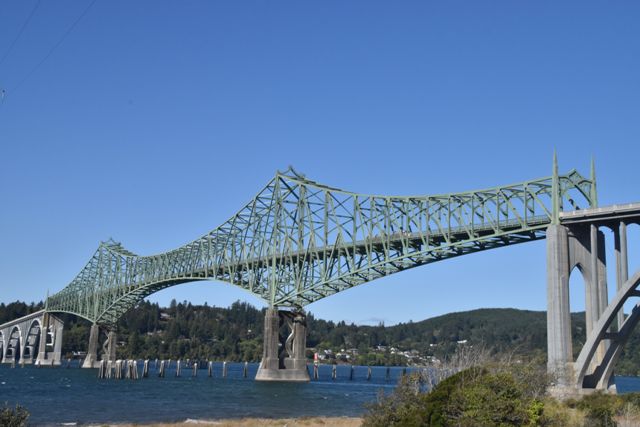Welcome to the Conde B. McCullough Memorial Bridge, a striking example of engineering and architectural skill, located in North Bend, Oregon. This iconic structure, also known as the North Bend Bridge, is named after its chief engineer, Conde B. McCullough, who was a visionary in the field of bridge design.
Built between 1934 and 1936, the bridge was part of a broader initiative to improve Oregon’s infrastructure and connect communities along the Oregon Coast. At the time, the Great Depression had swept across the United States, leading to widespread unemployment. The construction of the bridge not only provided jobs but also enhanced transportation and commerce in the region.
Conde B. McCullough, born in 1887, was a pioneer in the field of bridge engineering. He believed that bridges should be both functional and beautiful, and this philosophy is evident in the design of the Conde B. McCullough Memorial Bridge. The bridge features art deco elements, decorative pylons, and ornate lighting, making it not just a utility but a work of art.
Over the years, the bridge has played a crucial role in the development of the Oregon Coast. It serves as a vital link for U.S. Route 101, facilitating the movement of people and goods. The bridge was added to the National Register of Historic Places in 2005, recognizing its historical and architectural significance.
In a broader historical context, the bridge stands as a testament to the New Deal era’s efforts to reinvigorate the American economy through public works projects. It is a reminder of the impact that thoughtful design and engineering can have on a community.
Visitors and locals alike often share stories of the bridge, from its majestic views of Coos Bay to its role in the daily lives of those who rely on it. Whether you’re driving across it, walking nearby, or exploring remotely, the Conde B. McCullough Memorial Bridge is a significant piece of Oregon’s history and a symbol of human ingenuity.




